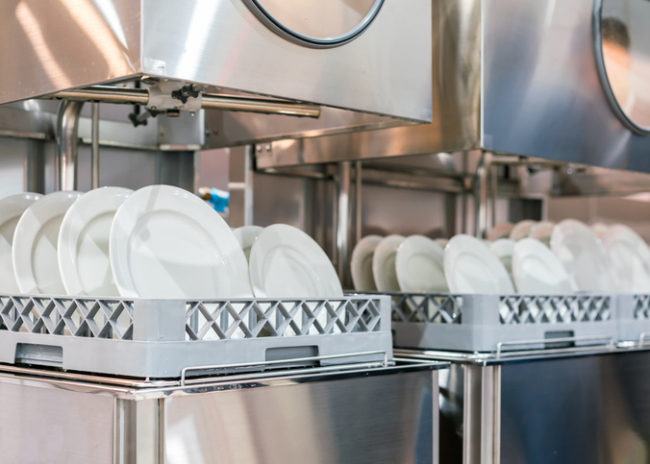Large warewashing systems like flight-type units are popular in high-volume environments, like schools, hospitals and hotel catering services. Keeping these warewashing machines up and running is essential to the success of these operations:
Undercounter warewashers can last between 5 and 10 years with proper maintenance.
Specific warewasher types are designated for different types of foodservice operations and volumes.
Warewashers can clean a variety of items. But some units may be better than others when it comes to cleaning certain items, like plastic trays and beer mugs.
Although warewashing tends to get overlooked because it does not generate revenue in foodservice operations, the dishwashing area typically features some of the foodservice operation’s most expensive equipment. The type of unit that best suits a foodservice operation depends on the kitchen, restaurant’s volume and the items the unit will wash.
Although warewashing tends to get overlooked because it does not generate revenue, the dishwashing area typically features some of the most expensive equipment in any foodservice operation. The type of unit that best suits an operation depends on the kitchen, the restaurant’s volume and the type of ware being washed.
Featured Products
-

VDU30 Undercounter Dishwasher
Veetsan Star
The VDU30 Undercounter Dishwasher is suitable for use in bars and small restaurants. This sanitizing dishwasher cleans up to 30 racks per hour in 180-degree F water. The unit requires a cold water line hookup.
-

KA Series Rack Conveyor Dishwashers
Meiko USA Inc.
The KA Series rack conveyor system features a high-contrast, glass touch-screen display that keeps operators informed during the washing process. Available information includes service diagnostics, error logging, troubleshooting and real-time performance updates.
Related Articles
-
What to Consider When Purchasing a Faucet
Read FeatureFaucets are an obvious necessity in commercial kitchens, and foodservice operators can choose from a variety of types, including units designed for handwashing, prerinsing of dishes and various cleaning jobs.
-
What to Consider When Purchasing a Disposer
Read FeatureNot following manufacturers’ recommendations when selecting a disposer can result in an inadequate system that will not meet the operation’s waste needs. Because most operations become more dependent on these systems than anticipated, it is better to go bigger in terms of horsepower to ensure the waste amount can be accommodated.




